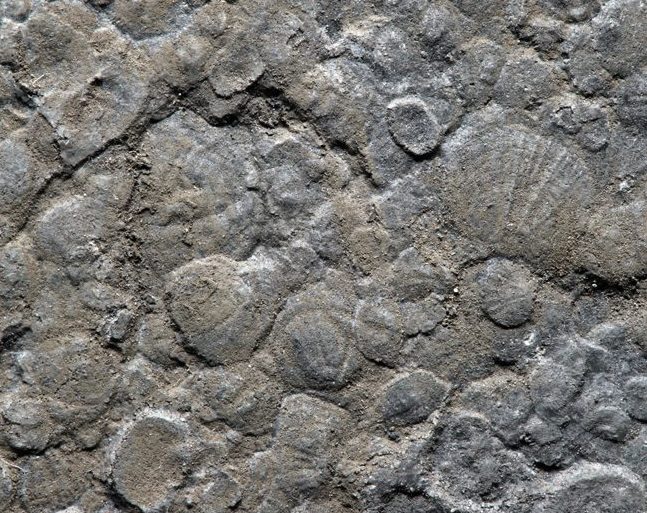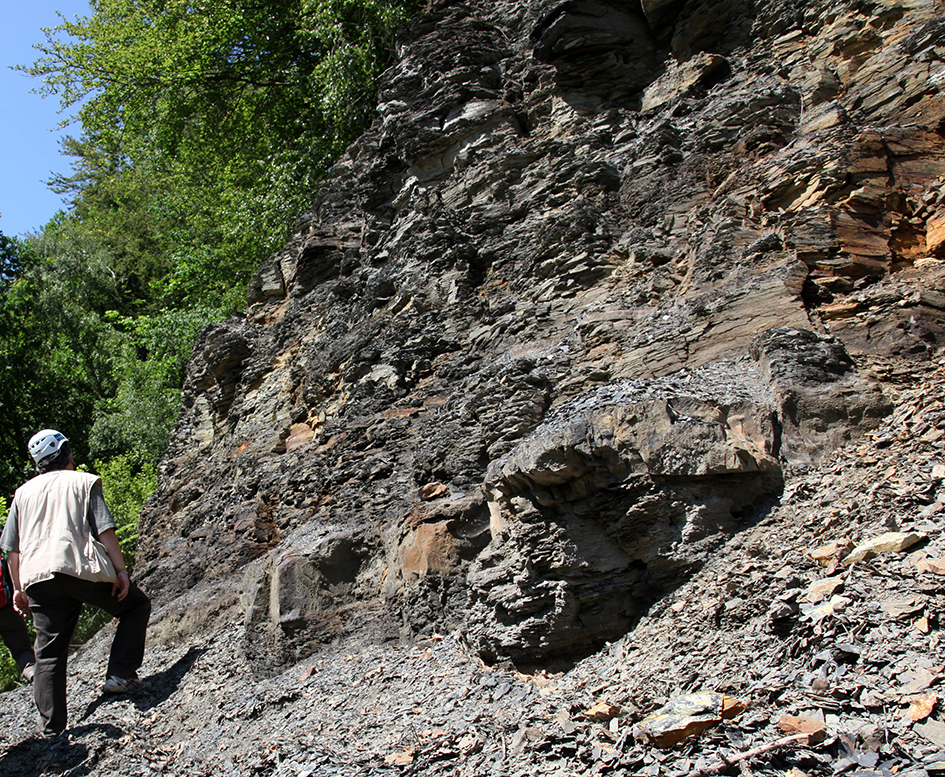Animals breath oxygen, but fossils of some of the earliest animals are found in what appears to be anoxic parts of the oceans. New research, led by Tais W. Dahl in collaboration with researchers from GEUS and Royal Holloway University London, shows that fluctuations in O2 availability at the seafloor allowed benthic animals to invade in the 500 million year old Alum shale Sea in Scandinavia. This discovery settles a long standing debate between paleontologists and geochemists regarding the lifestyle and conditions for life during the emergence of animal life. The results are published in the scientific journal Nature Scientific Reports.

“We have looked at the molybdenum and uranium content in a drill core through the Cambrian Alum shale of Bornholm, Denmark, and discovered brief intervals of sediment deposition in oxygenated waters”, explains Tais W. Dahl from the GLOBE institute at University of Copenhagen.
Molybdenum tracks oxygen availability at the seabed
The study uses conventional methods for tracking the presence of anoxic waters with poisonous hydrogen sulfide in the bottom waters at the time when the Alum shale sediments were deposited, but the new study enabled 1000-times higher resolution than ever done before.
“Our study alone provide 100.000 measurements across 20 meters of drill core, which is more data in all geochemical databases that has developed since we started measuring marine sediments in the 1960s”, Tais W. Dahl says.
The authors confirmed previous expectation that, indeed, the Alum shale sea was mostly inhospitable to animals, but the high-stratgraphic resolution led them to see something new. Brief intervals of 1-5 millimeter thickness corresponding to only ~500 years had been deposited inoxygenated waters.
Co-author Niels Schovsbo from GEUS adds: “We have long thought that previous geochemical and/or paleontological interpretations were actually not compatible, since we find numerous fossils of animals that lived on the seafloor, such as brachiopods and trilobites”.

Invasion of animals solves the animal breathing paradox
The presence of benthic animal fossils in anoxic parts of the oceans is what the authors termed ‘The Cambrian breathing paradox’. This conundrum has led some paleontologists to suggest that the trilobites survived by help of bacterial symbionts, whereas others put doubt on the geochemical methods or even dispute that fossils were benthic.
The study also found evidence that the densest populations of brachiopod shells on the seabed occurred during oxygenated periods, and that multiple oxygen fluctuations occurred even within the ~500 year resolution of the method.
By implication, the solution to the paradox is that – yes, early animals needed oxygen for breathing, and – yes, anoxic conditions prevailed at the seafloor were these brachiopod and trilobite fossils are found, but these animals invaded and lived during periods when bottom waters were ventilated and reloaded with oxygen.
The research was financially supported by the VILLUM foundation, the Carlsberg Foundation and Geocenter Denmark.
The paper is available online, published on August 12th, 2019:
www.nature.com/articles/s41598-019-48123-2
Press release in Danish is available at the website of the Geological Survey of Denmark and Greenland (GEUS)
